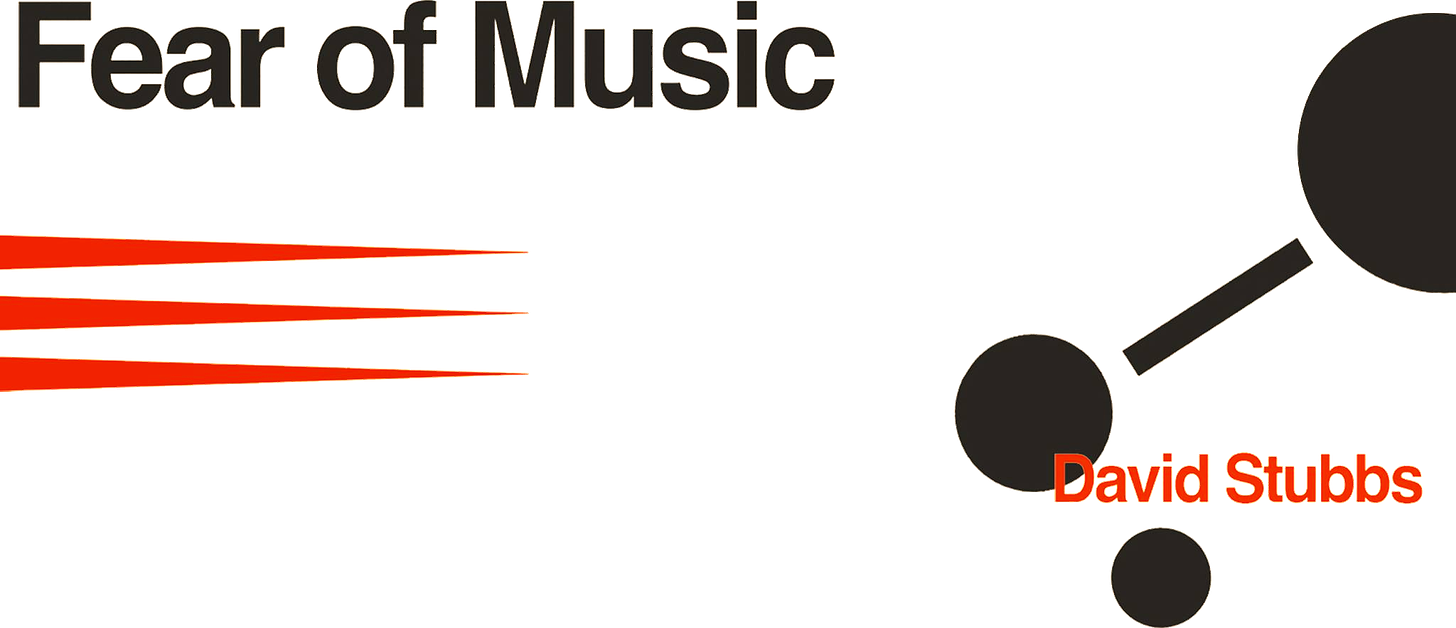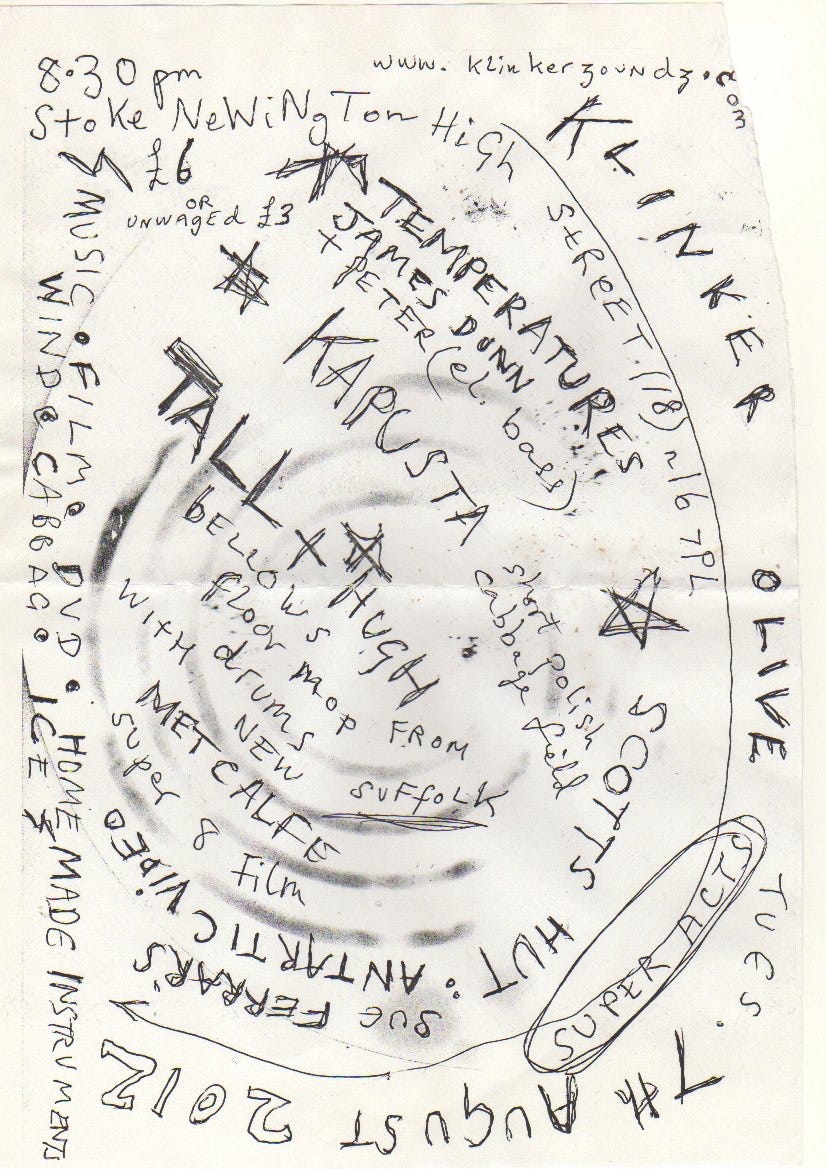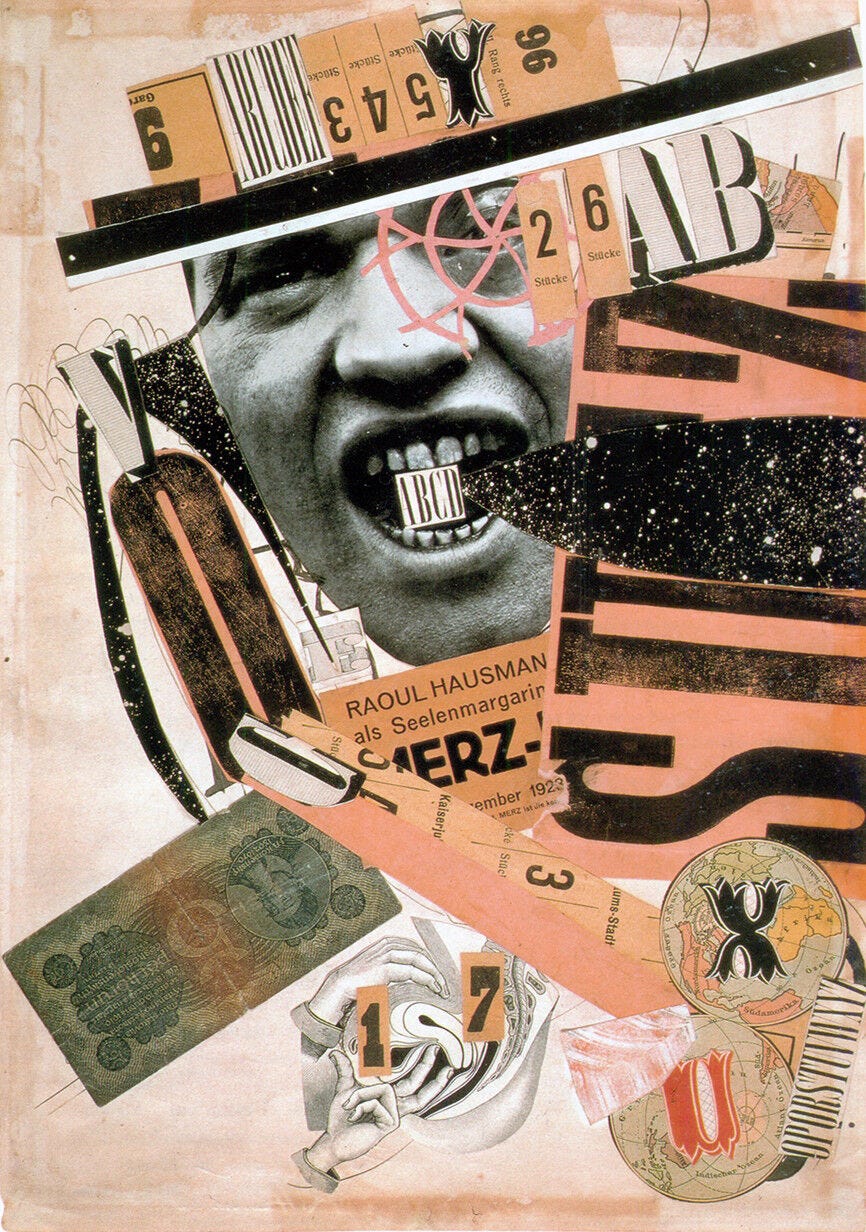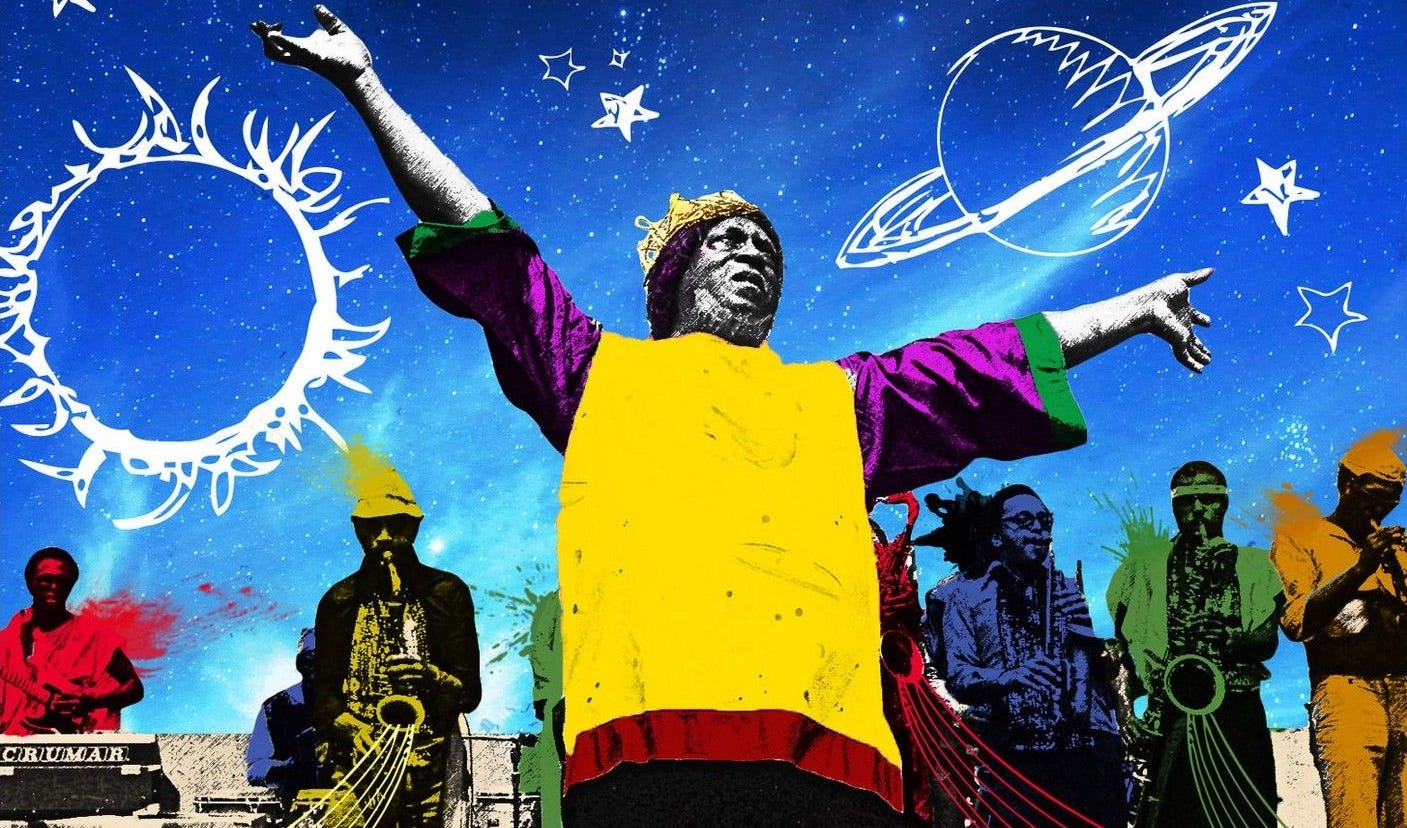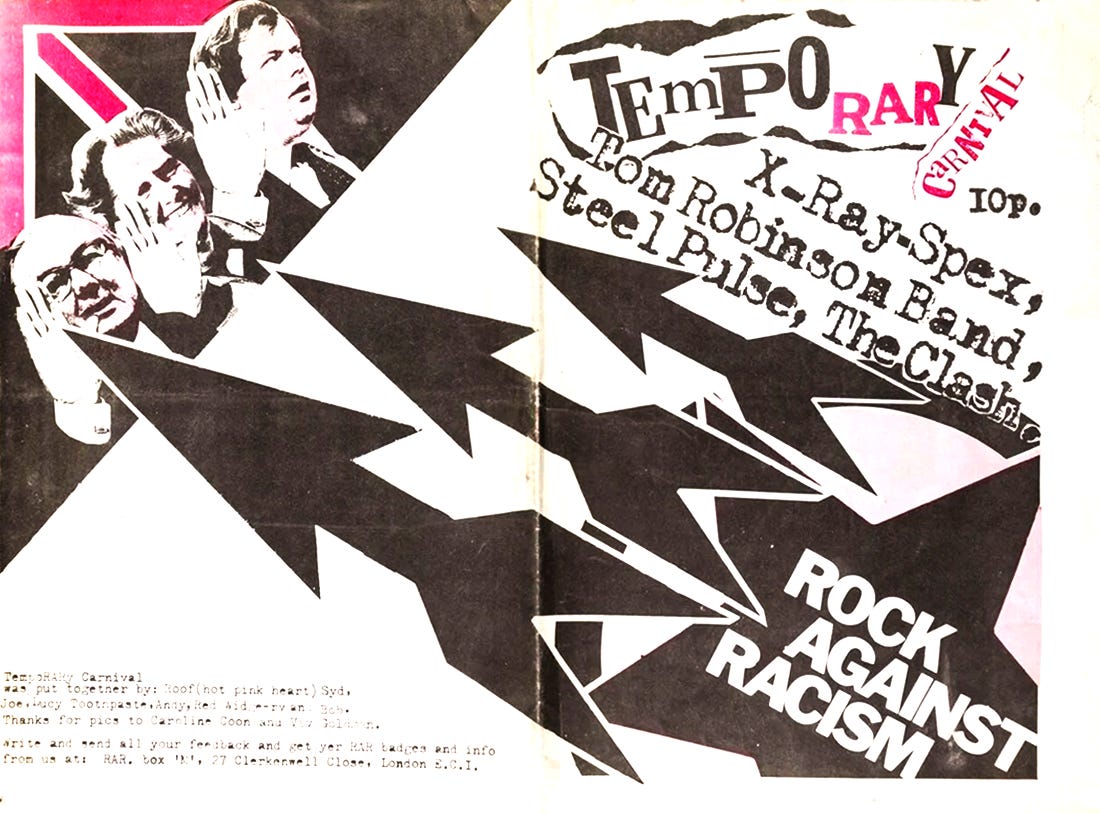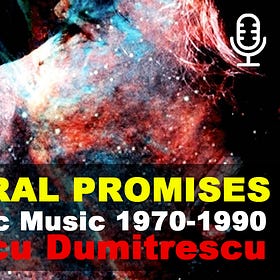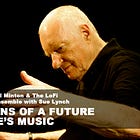Fear of Music: Why People Get Rothko But Not Stockhausen
A review of David Stubbs, Fear of Music: Why People Get Rothko But Don’t Get Stockhausen? Why do people flock to see abstract art but run screaming from ‘abstract music’?
David Stubbs, Fear of Music: Why People Get Rothko But Don’t Get Stockhausen (Zero, 2010), £9.99.
The Tate Modern is one of the biggest cultural attractions in the UK, welcoming over five million visitors a year.1 Thousands flocked to see its recent Futurist and Vorticist exhibition. On the other hand, forthcoming London concerts by the Romanian composers Iancu Dumitrescu and Ana-Maria Avram – whose music annihilates categories of form and genre, bursts with revolutionary energy and makes most other music of recent decades look catatonic – will attract perhaps only a few hundred people.
Here’s a book that asks the question of why avant-garde music has “failed to attain the audience, the cachet, the legitimacy of its visual equivalent”, and why “The same people who flock from miles around to mill in the presence of abstract art run screaming, hands clasped to their ears like Munch females, from ‘abstract music’.”(pp1, 9-10).
This difference seems at first glance to be systematic. As Stubbs notes, even after his death Stockhausen remains the butt of jokes in the press, where it’s taken for granted that only the most shameless of poseurs would even dare to pretend to enjoy the racket they believe he makes – yet many of the millionaire reactionaries behind this press are routinely to be found swooning over Rothko, Bacon and other icons of modern art, or even the Brit Art solecisms of Tracey Emin and Damien Hirst. My workplace stands only yards away from Hoxton’s White Cube gallery, home to exhibitions by many leading Young British Artists, including Emin and Hirst. It is owned and run by an Old Etonian, the son of a Tory MP, and each new exhibition is heralded by a convoy of limousines disgorging their expensively dressed passengers onto the pavement outside.
All this takes place only a short walk from what was, until recently, home to one of the few clubs in London to feature evenings of free music improvisation – the Klinker. Based in a dishevelled room at the rear of an East End pub, only a few minutes away from the White Cube by foot, the Klinker existed in a wholly different cultural world. It may as well have been another universe.

The problem with this book is that having depicted this disparity in the public reception of the visual and musical arts in its opening pages, the author does nothing to contextualise it. He admits that his book “isn’t intended as a sealed and finished academic work”, but rather “as much a matter of questions, suspicions and impressions as answers, historical facts and conclusions” (p2). But this parade of his modesty can’t hide the fact that Stubbs’s attempts at explanation fail to gain traction because of the complete absence of any sense here of what makes this ‘progressive’ music worth listening to in the first place.
Instead, we’re offered a bluffer’s guide to the history of ‘new music’ as defined by the culture industry, complete with customary setpiece scenes from the music’s history; Schoenberg’s correspondence with Kandinsky, Charlie Parker checking out Stravinsky and Varèse, Cornelius Cardew’s Maoist-inspired turn against Stockhausen and modernism, Derek Bailey practising in the orchestra pit of The Morecambe and Wise Show and Opportunity Knocks, and so on.
Despite differences in the manner in which art and music are mediated and consumed, it would be wrong to imagine that new music languishes in complete obscurity while the visual arts luxuriate in the sunshine of public acceptance and understanding. The art celebrated in most galleries had been thoroughly recuperated long before the gallery doors creaked open. For instance, torn out of the context of war and revolution, and the sense of the imminence of social revolution that saturates it, the significance of the art produced by Dada and Surrealism, Constructivism and Futurism becomes impossible even to imagine, and is presented instead merely as a precursor to the kind of shabby ‘left-field thinking’, ‘creativity’ and ‘innovation’ represented by modern advertising.
It’s no coincidence that one of the Saatchi brothers, who founded Thatcher’s favourite advertising agency, should emerge as the major patron of contemporary British art. Works of art hang in galleries as objects not only of contemplation but of veneration, as quasi-religious icons, to be gazed upon in awe just as the bystanders gaze at the parade of celebrities making their way into the White Cube – united in their appreciation of the glamour of success, wealth and power.
it’s no coincidence that one of the Saatchi brothers should emerge as the major patron of contemporary British art
So, while there are differences in the nature and extent of the take-up of modern art and modern music today, they should not be fetishised or exaggerated. The differences that do exist are due in part to the fact that the relevant technologies of mass reproduction (colour printing in the case of the visual arts, the radio and record player in the case of the music) developed and achieved their effects at different historical moments, affecting how different media were absorbed by society.2 The strategies and techniques of visual modernism have penetrated deeper into the psyche of modern audiences, but the music too has been subject to commercial pressures, commodification and recuperation… and with similar results.
While it operates on a wholly different scale to the Tate Gallery, a magazine such as The Wire (to which Stubbs is a contributor) plays a part in promoting the ‘new music’ precisely as another object of contemplation, establishing and defining a market for it in the same way that Charles Saatchi promotes modern art, even if on a much humbler level, and even if they’ve had many great contributors: and when they do, they do it with the same sort breathless, indiscriminate approbation and fawning that characterises this book. But not always.
The irony is that, to the extent that commentators champion the new music as an index of their taste and sophistication – relating to it as a product that bolsters their sense of personal identity, selected from the range of options offered in the marketplace – they find themselves correspondingly incapable of making telling judgements about it.
To that extent, their ‘discriminating taste’ doesn’t discriminate. So, Schoenberg and Varèse, Sun Ra and Coltrane, Beefheart and Hendrix are all rightly celebrated here, but then so are Björk, Radiohead and Sonic Youth. These make their way into Stubbs’s pantheon presumably because they too are marketed as ‘progressive’ products. I don’t mind any of them as such, and I own records by them, but they are not comparable.

You are welcome to disagree with my judgements about this – most people will – the point is that Stubbs provides no grounds for deciding either way. He does have occasional criticisms to make of, for example, minimalism. The music of Philip Glass and John Adams has been touted as continuing the radicalism of the modern tradition while moving beyond it. It is the sound of the complete abandonment of any critical practice, the sound of artists who have nothing worthwhile to say, but who are encouraged to say it at length. The same argument could be made about Brian Eno’s ambient music or the medievalism of Arvo Pärt, both of which have proved to be similarly popular (== ‘saleable’).
The most glaring exception to Stubbs’s cheerfully inclusive attitude to the music – notable because it’s the acid test for any serious commentator on popular culture – is Frank Zappa. Zappa, apparently, “didn’t appear to have a Dionysian fibre in his being. He was an artisan, a satirist, and technically very gifted – he simply lacked a soul” (p80). But what is ‘soul’ here? He cannot be talking about a feeling for black-American music, which Zappa had in spades (with Thing-Fish he even revealed himself as a decent composer of gospel hymns), but collusion in making ‘hip’ consumers – square, monied and fake – feel good about themselves.
In accusing Zappa of lacking ‘a soul’, Stubbs sounds for all the world like a country parson denouncing the pretensions of an especially irksome, though competent, mechanic. He expresses the prejudice that rock can only be music of the gut, of instinct. Zappa’s simultaneous refusal of both high seriousness and the industry-allotted role of inchoate wild man – all balls and no brains – explodes the industry’s interdict on critical intelligence and is therefore repellent to professional critics, whose existence depends on finding a productive relationship with the culture industry, and who therefore can’t afford to take aim at its ideological underpinnings.
This inability to get beyond the ideology of the culture industry leads Stubbs into a series of fatal misreadings. Of punk, he says that it is “often crudely caricatured as a roar of working-class discontent, a political protest, whereas in fact, it was a protest against the dark tedium of British 70s life, not least under the Labour Government… It and Thatcherism were arguably two sides of the same coin” (pp83-84). Here he trades on an absurdly narrow idea of politics.
British punk was certainly politically ambiguous at the outset. It took a political argument to galvanise it in opposition to racism and fascism, and Rock Against Racism remains in many ways a model of how communists might relate to popular culture. But it’s a different matter to argue that punk echoed Thatcherism because its stance precluded the very idea of social democratic reformism, or any kind of gradualism.
Punk’s ‘protest against tedium’ represented a fleeting realisation within popular culture of the essential Situationist idea that boredom is a result of repression, not some mysterious Zeitgeist malaise but something being done to you by a social system and those who control it. Punk’s barbaric yawp of negation embodies ambitions far closer to the hearts of revolutionaries than anything to be found in the affirmations of the ‘post-punk’ that followed, and which Stubbs goes out of his way to defend against punk.
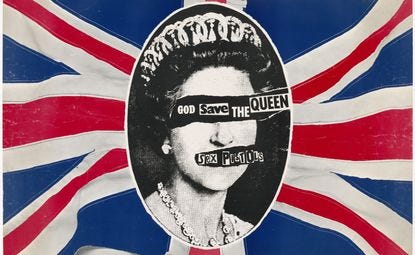
Great music exists because there have always been musicians willing to resist the identity-logic of the market and its need to force the music into categories and modes suitable for consumption (and so unsuitable for expression). Schoenberg’s overturning of tonality, and Johnny Rotten’s scrawling of ‘I Hate Pink Floyd’ on his T-shirt, form part of a single history in that regard, despite their existing in cultural contexts that supposedly have nothing in common.
This is also the state of music today, racked as it is by episodic eruptions of a permanent revolution wherein musicians attempt to pursue the freedom and universality denied them by capitalism, which holds back the development of technique in music as it does everywhere else. These (supposedly purely musical) changes themselves take place in the context of the theatres, clubs, communities and social spaces which the musicians and their supporters create and struggle to use and control. They are then subject to the predations of a music industry whose agenda invariably runs counter to that of the fans and musicians. All of these contests are structured by the development of capitalism and the class struggles it generates.
Stubbs is simply blind to the forces that frame the situation in which music takes place, and within which musicians, listeners and consumers, record labels and distributors operate. In his conclusion he offers instead a plaintive appeal for people to join him in the appreciation of such ‘civilised’ music, and, borrowing from John Cage, a quietistic meditation on its productive ‘uselessness’.
While this perspective will no doubt confirm consumers of the new music, such as himself, in the belief that their taste elevates them above the bustle of commerce and the market, it offers nothing of use to working musicians or anyone else who wants to understand why great music matters, and why it has a direct link to a total critique of existing conditions, and therefore to our hearts and minds.
First published in International Socialism Journal #133, January 2012.
Spectral Promises: Electronic Music 1970-1990
Planned as a long Q&A session between Andy and long-time Traveller podcast co-host, Conor Kostick, that discussion raised so many questions and went on for so long that it seemed best to postpone airing the issues on the podcast. For this episode we excerpted Andy’s intro to the discussion, touching on his own experience listening to and making electron…
Fruit Flies Like a Banana: Extract from Faust: Stretch Out Time 1970-1975
This was originally written as a chapter in my book about the group Faust. I suspect few Faust fans ever read it, since it deals with the nature of time in music, rather than with the group as such. It was first published in 2006, and some of it I would write differently now, but I stand by the gist of it.
5,035,000 in the year to March 2011, according to The Tate Report 2010-11.
Stubbs hints at this without developing the idea very far; p19.





